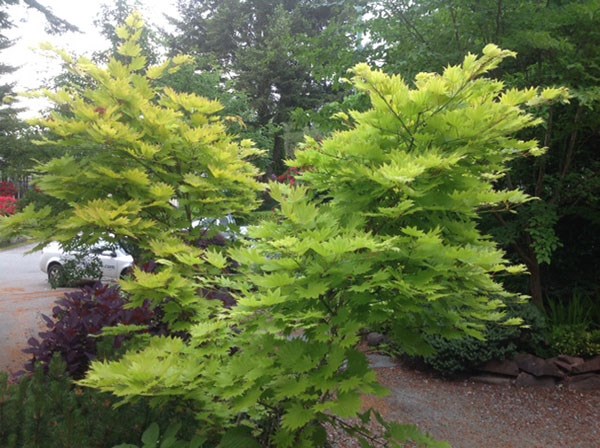Japanese maples are a popular tree in our part of the world. The trees, which have the botanical name acer, grow well in our moderate temperatures and thrive in our naturally acidic soil. From the native vine maple to highly cultured specimen varieties, there seems to be a maple that fits every West Coast garden.
Popular in �鶹�����gardens is the lovely acer palmatum dissectum “crimson queen,” the lower growing weeping variety that just seems to get more interesting and regal with age. It grows slowly to create a small mushroom-shaped tree with a gently cascading look. Many of the red-leafed maples we see gracing people’s yards are a popular cultivar called acer palmatum “bloodgood,” whose already red leaves take on a stunning scarlet colour in the fall. Part of the charm of this upright-growing variety is the dapples shade it provides that still lets light through to gardens planted below the tree branches.
A personal favourite of mine is acer japonicum aureum, also known as the golden full moon maple. If you have a spot with half-day sun (preferably morning sun), this slow-growing beauty may be a great specimen tree for your garden.
These beautiful trees are not with out problems, however, as there is a soil-borne fungus called verticillium wilt that affects many types of maples. The infection generally starts in the roots and grows upwards in the water-connecting tissues, causing wilting or die back in the upper parts of the tree. You may notice yellowing or shrivelling of lower leaves, brown or black streaks in the tissue under the bark and branch die back.
The fungus cam be spread in contaminated soil, so if you think your tree is suffering from verticillium wilt, be careful not to spread soil from around affected tree to other areas. This can also travel on gardening tools and boots, so clean everything carefully.
There are not many chemical controls that can reverse the wilt. The best course of defence is keen observation. If you begin to notice wilt or dieback, cut out the infected branches and destroy. If you catch it early enough, you can usually get on top of it and the tree will soldier on. Other times, the wilt sneaks up on you and takes over the tree and kills large portions. At this point it is prudent to have the tree removed. You can try adding new soil to the site of the dead tree and replace with another species (not an acer).
In nature, we always take the good with the bad. Don’t let the possibility of verticillium wilt dissuade you from choosing a maple.




